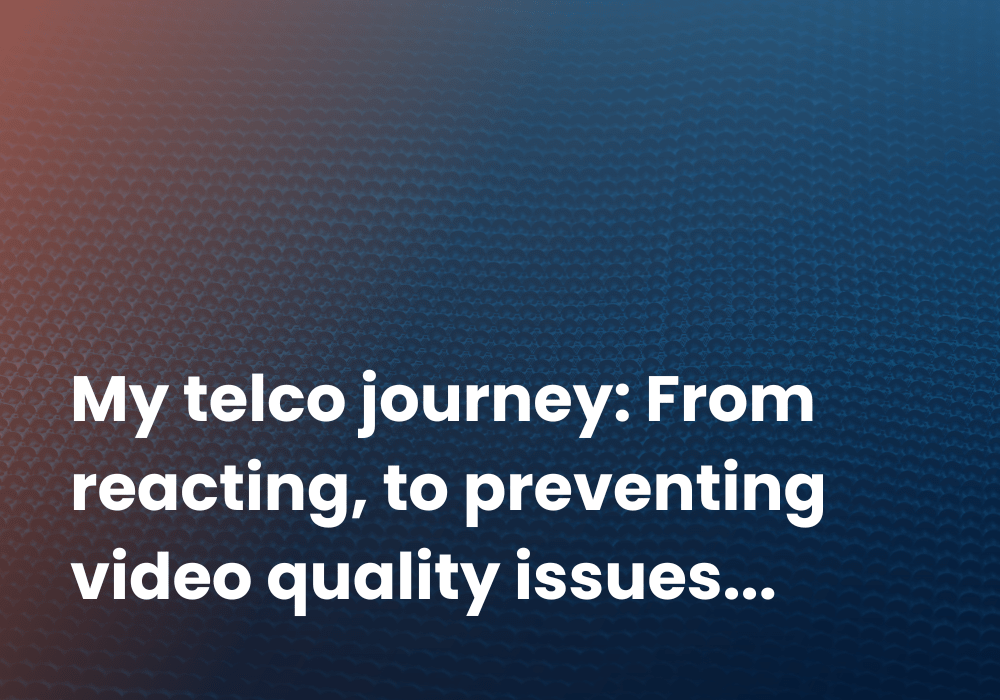As the telecommunications landscape continues to evolve rapidly, telcos face a multitude of challenges. These challenges, if not addressed strategically, can compromise customer satisfaction, inflate operational expenses, and hamper operational efficiency. One of the primary pain points driving these difficulties is the management and delivery of high-quality video experiences to end users. Here, we will look at how a video quality of experience monitoring solution, like that offered by Agama Technologies, can address these critical issues.
The pressing challenges of telco operators
In a highly competitive market, telcos are battling on several fronts. Customer satisfaction, as measured by the Net Promoter Score (NPS), is a vital indicator of success. Yet, many telcos struggle to achieve high NPS due to the inconsistent quality of video experiences. Poor video quality has a direct impact on customer satisfaction, leading to a decreased NPS and, ultimately, lower customer retention.
Operational expenditure (OPEX) is another significant concern. High OPEX costs can erode profitability and create a vicious cycle of cost-cutting and service degradation. The costs of managing and troubleshooting video delivery issues, including customer service contacts, truck rolls, and device swaps, account for a significant portion of these expenses.
Moreover, the volume of customer contacts over video issues can become overwhelming. Each contact requires resources, both human and technical, and frequent device swaps and truck rolls only add to the logistical and financial strain. All of these factors contribute to a complex, costly, and less-than-optimal service delivery model.
The power of video quality of experience observability
In this challenging scenario, a video quality of experience monitoring solution can be a lifeline. Agama, for example, offers such a solution allowing telcos to gain deep insights into the video delivery chain. The result is a powerful tool for identifying the root causes of customer issues.
Agama’s solution can also help to lower OPEX costs by reducing the number of video-related customer contacts. Fewer customer contacts mean fewer resources spent on troubleshooting and service calls. Similarly, by proactively identifying and resolving issues, the need for truck rolls and device swaps can be significantly reduced. This not only lowers direct costs but also minimizes disruptions to customers, thereby further increasing customer satisfaction.
At its core, Agama’s solution revolves around the concept of proactive problem-solving. It focuses on identifying and addressing issues before they escalate into larger problems that negatively impact the customer experience. By ensuring a consistent and high-quality video experience, it can significantly improve NPS.
The strategic shift
Adopting a solution like Agama’s for monitoring the quality of the video experience represents a strategic shift for telcos. It’s about shifting from being reactive to being proactive, from managing problems to preventing them from happening. This change can result in a more efficient operational model, higher customer satisfaction, and ultimately, a stronger market position.
In conclusion, while telcos face significant challenges in delivering high-quality video experiences, these challenges can be overcome. By investing in a video quality of experience monitoring solution, telcos can address the root causes of their pain points and transform their operations. It’s a forward-thinking approach that promises not only to survive but also to thrive in today’s telco landscape. The future of telecommunications is bright, and with the right tools, telcos can lead the way.
About Timmy Langeveld
Timmy is a video streaming expert with a product management background and a decade of experience in the telecommunications industry. He is Agama’s Business Development Manager, ensuring that our operators get the most out of Agama’s solutions on a daily basis.

